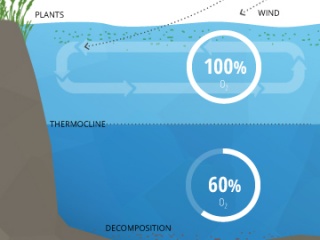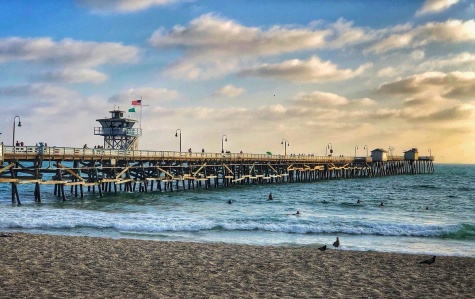
By: Sydney Donovan | Editor
February 21, 2020

Many people don’t understand how much of a role dissolved oxygen plays in our environment. Oxygenation is the measurement of dissolved oxygen which can be taken from either soil or water. In this case water can be affected by dissolved oxygen in the ocean and the harbor. Dissolved oxygen levels will always fluctuate due to temperature, salinity, and pressure changes. Different concentrations of oxygen can also be affected by photosynthesis, respiration, and decomposition.
Oxygen diffusion has been seen to have an effect on nitrification as nitrification can degrade water quality and thus making oxygen levels less abundant. Closely related, algae blooms can sometimes take a toll on nitrification as a result of an excess of nutrients. Water with high concentrations of nutrients causes more algal and bacterial growth. With more algae available there is more food and bacteria present in our oceans, using up the dissolved oxygen. Dissolved oxygen plays a big role as the primary source of oxygen to phytoplankton in a pond. Aside from ponds this can also be found in harbors and oceans. With sunlight present the phytoplankton are able to produce oxygen through photosynthesis and release oxygen back out into the atmosphere. Without enough oxygen in the water our plants and animals wouldn’t be able to survive. “In IB Marine Science we talked about oxygen levels and they are really essential for growth and the environment,” San Clemente High School senior Bella Paredes said.
The ocean plays such a big role in the environment and we are constantly reliant on it. It is so important to be educated on something that is so close and a big part of our lives living close to the beach. Since the harbor can be seen very differently than the pier, oxygen can be introduced to a body of water. “I never really thought about the oxygen levels except when I started looking at the surf report,” SCHS senior Dana Shany said. The two ways in which this is done is as a byproduct of photosynthesis by both phytoplankton and/or other marine plants and algae. Another way would be by mixing water from currents and/or the wind.

Leave a Reply